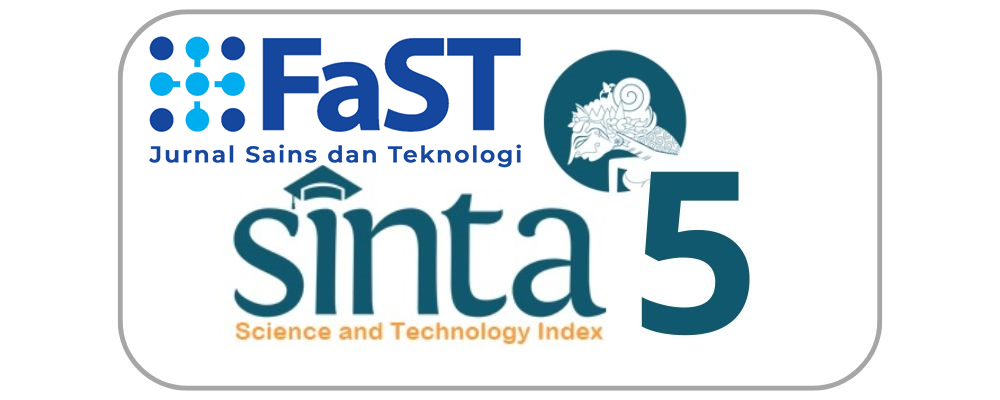KARAKTERISTIK TEPUNG KACANG MERAH HASIL AUTOCLAVING, COOLING, DAN AUTOCLAVING-COOLING [CHARACTERISTICS OF AUTOCLAVED, COOLED AND AUTOCLAVED-COOLED RED KIDNEY BEAN FLOUR]
Keywords:
Autoclaving, cooling, red kidney bean flourAbstract
The characteristics of autoclaved, cooled and autoclaved-cooled red kidney bean flour were studied. Autoclaving was done at 121°C for 15 min while cooling was done at 6°C for 24h. The parameters of red kidney been flour were resistant starch, starch, amylose content, proximate and X-ray diffraction pattern. Resistant starch content (6.23%) and amylose (8.38%) of autoclaved-cooled red kidney flour is higher than control and cooled red kidney bean flour. Autoclaved-cooled red kidney flour has 6.20% of water, 3.97% of ash, 20.79% of protein, 2.84% of fat, and 66.21% of carbohydrate. The X-ray diffraction pattern of autoclaved-cooled red kidney flour is B type with diffraction peaks at 17, 19 and 22 ° 2θ.
ABSTRAK
Karakteristik tepung kacang merah hasil autoclaving, cooling, dan autoclaving-cooling telah diteliti. Autoclaving dilakukan pada suhu 121°C selama 15 menit sedangkan cooling dilakukan pada suhu 6°C selama 24 jam. Parameter tepung kacang merah yang diuji meliputi kadar pati resisten, pati, amilosa, proksimat, dan pola difraksi X-ray. Autoclaving-cooling menghasilkan kadar pati resisten (6,23%) dan amilosa (8,38%) tepung kacang merah yang lebih tinggi dibandingkan tepung kacang merah kontrol dan hasil cooling. Tepung kacang merah hasil autoclaving-cooling memiliki kadar air 6,20%, abu 3,97%, protein 20,79%, lemak 2,84%, dan karbohidrat 66,21%. Pola difraksi sinar X tepung kacang merah hasil autoclaving-cooling adalah tipe B dengan puncak difraksi pada 17, 19, dan 22° 2θ.
Kata kunci : Autoclaving-cooling, tepung kacang merah
References
Anugrahati, N. A., Pranoto, Y., Marsono, Y., and Marseno, D. W. 2015. In vitro digestibility of Indonesian cooked rice treated with cooling-reheating process and coconut milk addition. International Research Journal of Biological Sciences 4(12):34-39. Anugrahati, N. A., Pranoto, Y., Marsono, Y., and Marseno, D. W. 2017. Physicochemical properties of rice (Oryza sativa L.) flour and starch of two Indonesian rice varieties differing in amylose content. International Food Research Journal 24(1):108-113. AOAC. 2005. Official Method of Analysis of the Association of Official Analitycal Chemists 18 th Ed. Maryland: AOAC Int. Dupuis, J. H., Liu, Q., and Yada, R. Y. 2014. Methodologies for increasing the resistant starch content of food starches: a review. Comprehesive Reviews in Food Science and Food Safety 13(6): 12191234. Faridah, D. N., Rahayu, W. P., dan Apriyadi, M. S. 2013. Modifikasi pati garut (Marantha arundinacea) dengan perlakuan hidrolisis asam dan siklus pemanasan-pendinginan untuk menghasilkan pati resisten tipe 3 Teknologi Industri Pertanian 23(1): 6169. Fathurrizqiah, R. dan Panunggal, B. 2015. Kandungan pati resisten, amilosa, dan amilopektin snack bar sorgum sebagai alternatif makanan selingan bagi penderita diabetes mellitus tipe 2. Nutrition College 4(2): 562-569. Goñi, I., Garcia-Diz, L., Mañas, E., and Saura-Calixto, F. 1996. Analysis of resistant starch: a method for foods and food products. Food Chemistry 56(4):445-449. Jiang, S., Dai, L., Qin, Y., Xiong, L., and Sun, Q. 2016. Preparation and characterization of octenyl succinic anhydride modified taro starch nanoparticles. PLoS ONE 11(2): e0150043. Katayama, K., Kitahara, K., Sakai, T., Kai, Y., and Yoshinaga, M. 2011. Resistant and digestible starch contents in sweet potato cultivars and lines. Journal of Applied Glycoscience 58:53-59. Rosida, Harijono, Estiasih, T., and Sriwahyuni, E. 2016. Physicochemical properties and starch digestibility of autoclaved-cooled water yam (Dioscorea alata L.) flour. International Journal of Food Properties 19:1659-1670. Sai-Ut, S., Ketnawa, S., Chaiwut, P., and Rawdkuen, S. 2010. Biochemical and functional properties of proteins from red kidney, navy, and adzuki beans. Asian Journal of Food and Agro-Industry 2(4): 493-504. Sasanam, S., Paseephol, T., and Moongngarm, A. 2011. Comparison of proximate compositions, resistant starch content, and pasting properties of different colored cowpeas (Vigna unguiculata) and red kidney bean (Phaseolus vulgaris). International Journal of Nutrition and Food Engineering 5(9): 553-557. Setiarto, R.H.B, Jenie, B.S.L., Faridah, D.N., dan Saskiawan, I. 2015. Peningkatan pati resisten tepung talas melalui fermentasi dan pemanasan bertekanan-pendinginan serta evaluasi sifat prebiotiknya. Jurnal Ilmu Pertanian Indonesia 20(3):191-200. Wang, S., Li, C., Copeland, L., Niu, Q., and Wang, S. 2015. Starch retrogradation: a comprehensive review. Comprehensive Reviews in Food Science and Food Safety 14: 568-585. Zhang, Y., Liu, W., Liu, C., Luo, S., Li, T., Liu, Y., Wu, D., and Zuo, Y. 2014. Retrogradation behaviour of highamylose rice starch prepared by impoved extrusion cooking technology. Food Chemistry 158: 255-261.
Downloads
Published
Issue
Section
License
“Authors who publish with this journal agree to the following terms:
1) Authors retain copyright and grant the journal right of first publication with the work simultaneously licensed under a Creative Commons Attribution License (CC-BY-SA 4.0) that allows others to share the work with an acknowledgement of the work's authorship and initial publication in this journal.
2) Authors are able to enter into separate, additional contractual arrangements for the non-exclusive distribution of the journal's published version of the work (e.g., post it to an institutional repository or publish it in a book), with an acknowledgement of its initial publication in this journal.
3) Authors are permitted and encouraged to post their work online (e.g., in institutional repositories or on their website). The final published PDF should be used and bibliographic details that credit the publication in this journal should be included.”





